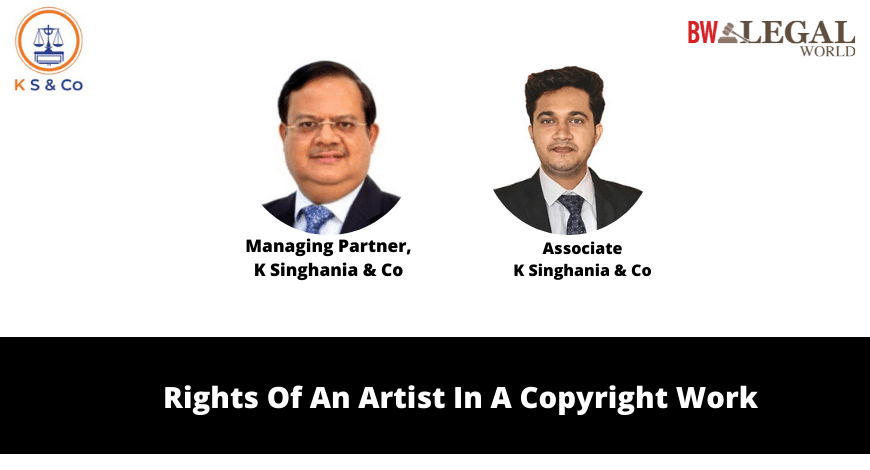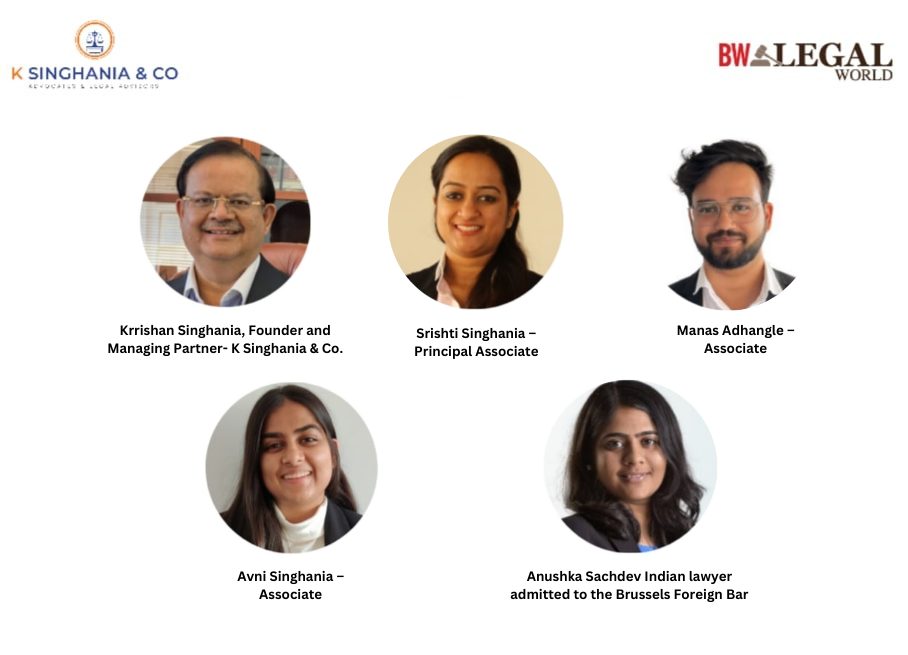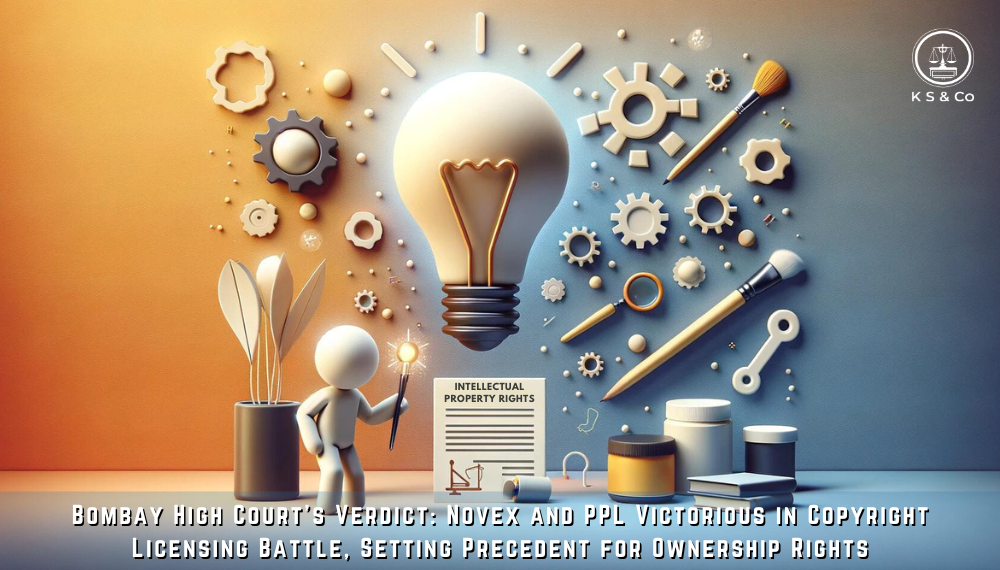What is Copyright?
Copyright is a bundle of rights given by law to the creators of literary, dramatic, musical and artistic works. Protection by copyright law is extended to the producers of cinematographic films and sound recordings.
These are rights for reproduction, communication to the public, adaptation and translation to all forms of written work, including digital, textual, video graphic, sound recordings, paintings and pictures.
What is an Artistic work?
A work can be defined as an “artistic work” when it is made with an expression of thinking that represents the artist’s talents and judgments. This must be the creator’s original creation and unique to him. The work passes the test of originality when the expression of his idea is original.
The author or creator of the work is generally considered the original owner of the copyright. There are certain exceptions to this; where the employers may own the work of their employees during the course of their employment or when the work is generated as a part of the commissioned project by freelancers.
It is always advisable to register one’s work. Copyright registration is extremely valuable because it assists in bringing civil and criminal actions against the person who has violated the Copyright holders’ rights. Copyright registration helps copyright owner claim immediate relief. Since, copyright registration is not compulsory under law thus protection is given for even an unregistered copyright work. However, the burden of proof then lies on the owner to prove that the work is his original work, and it has certain level of creativity and uniqueness. Hence, it is very difficult to get immediate relief in cases where Copyright work is unregistered.
WHAT RIGHTS ARE MADE AVAILABLE TO AN ARTIST?
The Copyright Act grants the author two primary rights:
Economic Independence:
The author has the economic independence to commercialize his copyrighted works which can be literary, musical, theatrical, cinematographic film etc. The author also has the right to reproduce, illustrate, communicate, and modify the work in any way.
Since 1994, Indian artists and their successors have enjoyed the right to profit from the resale of their works. Very few artists must be aware of this clause in Indian law, which has been resting in the books for the past 24 years.
Mr. Tyeb Mehta’s canvases, for example, were sold for crores of rupees in his later years. He did not profit from these auctions directly since the paintings were supplied by collectors rather than the artist.. Not only did Mehta have a claim to a portion of those record-breaking prices prior to his death in 2009, but his successors stand to benefit from the ongoing sales such as the Saffronart auction on June 15, 2018, where Mehta’s “Kali” was purchased by an unknown bidder for more than Rs 26 crore.
Under section 53A of the Copyright Act, for artistic works like paintings, sculptures, drawings, literary manuscripts, theatrical works, and musical works, artists have the right to a share in the resale of the original work if the resale price exceeds Rs.10,000.
Moral Rights:
The Moral Rights are covered under Section 57 of the Copyright Act. While the notion of Moral Rights has been included in the Copyright Act since its establishment, this right experienced revival with the Copyright Act’s modification in 2012. The notion of permanent moral rights was reinstated in the modified Act, reintroducing a dualistic paradigm of distinct regimes for economic and moral rights. The following are the different rights that fall under the banner of Moral Rights:
This is a right conferred to an author to assert his authorship over the work as well as to prevent others from claiming his original work as their own.
For Example:
An artistic work or the director of a copyrighted film has the right to be identified as the author or director of the work – these are known as paternity rights.
(In short: Right to Credit/appreciation)
This privilege allows an artist to assert ownership over his work. This permission specifies how and determines whether the artists’ names should be affixed to the work.
This right prohibits the author’s work from being twisted, dismembered, misrepresented, or mistreated as an expression of the artist’s personality, thus preserving the artist’s dignity and reputation in a legal manner. This privilege also allows an author to forbid unauthorized alteration of his work.
For Example:
The right of integrity is infringed if the work or film is subjected to derogatory treatment, which is prejudicial to the author’s honour or reputation.
Subsidiary rights include the rights to create and publish such work, the right to remove a previously published work from sale, the right to be free of excessive criticism and the right to prevent any infringement on the author’s personality. A subsidiary right is the right to manufacture or publish a product in several formats based on the original source.
For Example:
Subsidiary rights are widespread in the publishing and entertainment sectors. For example, the author can grant his subsidiary right to an agency, publisher, newspaper or film studio.
The holder of these rights has the option of using them on their own or leasing or transferring them to others. Subsidiary rights might include the right to publish the same work in numerous formats.
INDIAN COURT CASES ON RIGHTS AND PROTECTION OF AN ARTIST:
In recent times, Delhi High Court upheld the artist’s moral rights in the case of Jatin Das v. Union of India, CS(COMM) 559/2018. The Delhi High Court here stopped the respondent, the Steel Authority of India (“SAIL“), from further distorting the artist’s renowned art piece ‘Flight of Steel.’
SAIL commissioned the Plaintiff, Jatin Das (“Das“), to produce a welded sculpture in 1995. Das constructed “Flight of Steel,” a 30 foot high and 30 foot circular steel sculpture, in November 1995 and erected it at CEZ Square in Bhilai (now in Chhattisgarh). Das was notified in March 2012, much to his dismay, that his landmark art work had been removed, deconstructed, and transported to a zoo by SAIL.
At the zoo, it was discovered that the sculpture was damaged and turned to bits and pieces. These pieces were rather abandoned and dispersed across the zoo.
Das then won an interim order from the Delhi High Court in 2012, preventing SAIL from destroying the artwork further. Das claimed infringement of his unique rights, namely ‘moral rights,’ as the artist of the artwork, and requested a permanent injunction to prevent SAIL from further destroying the sculpture. SAIL filed a counter-suit, claiming that the sculpture was being transported because it was impeding the construction of a flyover that will cross the CEZ plaza. After hearing substantial arguments from both parties, the Court concluded that the problem may be handled by forming a Committee to investigate the situation and then, recommend a fair solution.
The dispute was finally determined by the Court on the basis of suggestions put up by the Committee, pursuant to which the sculpture would be transferred. Here, Das would repair and restore the artwork with aid from SAIL.
In the landmark judgment of Amar Nath Sehgal,(2005 (30) PTC 253 (Del)), the Court took a clear posture on an issue that has split worldwide copyright experts – “whether destruction of an artwork counts as a breach of the artist’s moral rights of integrity,” and replied emphatically “yes.”
While Das’ petition in the Delhi High Court has been decreed in accordance with the Committee’s recommendations, However, presently as per the order dated 12th April, 2022, the parties had jointly submitted that they will be taking requisite steps towards compliance of the terms of the Settlement arrived at between the parties.
If Jatin Das were to be decided on merits, then it wouldn’t have been surprising to see the court upholding the ratio of Amar Nath Sehgal. In the jurisprudence surrounding Moral Rights of an Artist’s work in India, it is comforting to know that the courts have primarily maintained these rights and that damages have to be paid after trial in circumstances with similar facts.
HOW CAN AN ARTIST PROTECT HIS OR HER RIGHTS?
One can preserve one’s rights as an artist by acquiring a copyright registration certification for the work that has been made. When there is a disagreement about ownership of the copyright, the certification and entries serve as first-hand evidence in court.
CONCLUSION:
It is essential for an artist to be informed of his rights under the Copyright law, and the best way for an artist to safeguard his copyright work is to get it registered in order to avoid undesired legal arguments, mental pain, harassment, and financial hardships over the ownership of his own piece of work.
The Copyright law and its regular amendments might be intimidating to an artist who only wants to produce and perform his or her art. However, every skilled artist recognizes the significance of the copyright law and how much it protects the artist. An artist who understands their rights will gain more from their work.






Leave a Reply